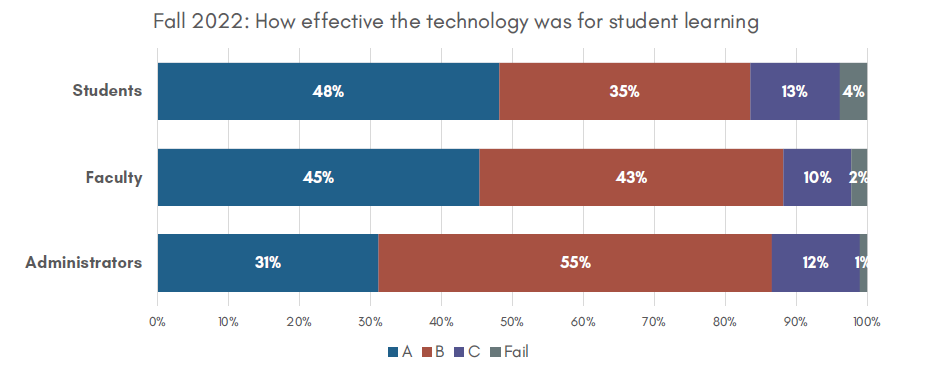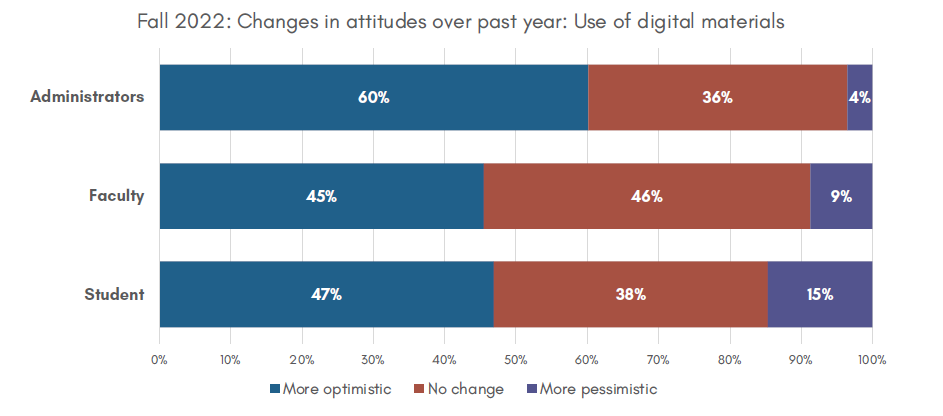You have /5 articles left.
Sign up for a free account or log in.

Community college students, faculty and administrators—from rural New Hampshire to urban Miami and beyond—have been emboldened by their pandemic-era experiences with digital course materials and online learning.
Left: DenisTangneyJr/Getty Images; right: Gabriele Maltinti/Getty Images
Against the backdrop of headlines blaring news about declining community college enrollments, one bright spot has emerged: community college students, faculty and administrators are broadly aligned in their enthusiasm for the digital transformation that has occurred at their institutions since the start of the pandemic. That’s the broad finding of a report, “The Digital Transformation of the Community College,” published today by Bay View Analytics.
First, the (bad) backdrop: between 2012 and 2019, community college enrollments declined by approximately 12 percent. The pandemic accelerated that trend, as enrollment at these institutions fell another 9 percent between 2019 and 2020, according to the report.
But community college students, faculty and administrators—from rural New Hampshire, urban Miami and beyond—have been emboldened by their pandemic-era experiences with digital course materials and online learning. Now, they are calling for more technology use in the future, including in face-to-face classes, according to the report.
“If any of your models about student preferences for online and blended learning came from prior to 2020, you should trash them and start over again because so much has changed,” said Jeff Seaman, director of Bay View Analytics, and report co-author. Julia Seaman, research director at Bay View, also co-authored the report, which was produced with support from Cengage.
The study surveyed 1,206 faculty members and administrators, 2,358 students and 1,252 institutions from all 50 states and the District of Columbia. The report is the seventh round of data collection in a series of surveys that began in April 2020. Most of the findings in the current report hail from the fall 2022 survey. If a question was not included on that survey, the findings from the fall 2021 were included.
Most of the community college student respondents (79 percent) gave their online courses a grade of A or a B in terms of effectively meeting their educational needs. This fall 2022 grade marked a small (3 percent) improvement from the spring 2021 grade students assigned. Few students (6 percent) assigned grades of D or F to the effectiveness of their online courses.
“Pre-pandemic and early in the pandemic in the North Country of New Hampshire, broadband access was an issue,” said Charles Lloyd, president of White Mountains Community College. “Some of that has been relieved by more broadband access and hotspots. Our campus is now an open-access zone all across our parking lot.”
Most of the community college students (56 percent) and faculty members (52 percent) who responded to the survey view online learning more favorably than they did before the pandemic. A small percentage of these online students (15 percent) and faculty (17 percent) are pessimistic.
“This idea that a student is either online or in person is no more,” said Madeline Pumariega, president of Miami Dade College. “Post-COVID, our students are both. They use online as a modality of convenience, to balance their lives with their work schedules.”
More than two-thirds (69 percent) of the community college faculty respondents now prefer to incorporate technology into their in-person classes. Nearly all (97 percent) reported that they had access to effective technology support and training.
“The digital transformation has real staying power from an access standpoint,” Lloyd said, adding that effective technology support is vital to access. “We cover the northern half of New Hampshire … Even though they may be online students, they still might take an online class from the comfort of our library.”
Community college students’ satisfaction with and optimism about online learning has created a growing demand for more online and blended learning, as most (58 percent) want more. Conveniently, their desires align with faculty desires (64 percent) to teach online courses.
On face value, remote Berlin, N.H.—home to White Mountains Community College—appears to have little in common with urban Miami. Berlin (pronounced “BER-lin”) is a heavily forested region of the state that was once home to a thriving paper industry, which, at its peak, employed more than 8,000 people in its mills and nearby woods. But the last of Berlin’s paper mills closed in 2021, and today the (beautiful) town ranks among the poorest in the state.
But Berlin and Miami have something in common. Both are home to community colleges whose presidents attested to positive, pervasive digital transformations in their student, faculty and administrator communities since the start of the pandemic, as the Bay View Analytics report describes.
“Whether a student wants to avoid driving 45 minutes on a country road with no cars or sitting in urban traffic for 45 minutes on a three-mile drive with 100,000 cars, online platforms at community colleges provide access points and the commodity of time, especially for our students that are balancing life along with pursuing college degrees,” Pumariega said.
Students, faculty and administrators also have more favorable opinions of digital course materials than they did in the fall of 2021, according to the report. On this topic, most administrators (60 percent) were optimistic, and close to half of faculty members (45 percent) and students (47 percent) were as well. Many reported no change, and a minority were pessimistic (4 percent of administrators, 9 percent of faculty and 15 percent of students).
“Students are not only seeing all things digital as niceties,” Llyod said. “They’re coming to expect them.”
A wholesale return to pre-pandemic norms for digital course materials and online and blended learning is unlikely, according to the report. Nearly all (90 percent) of the community college faculty respondents indicated that their teaching had changed due to the pandemic. And even more (97 percent) expect that the changes they made during the pandemic will endure.
Miami Dade, for example, now offers synchronous online course offerings in its MDC Live platform, in addition to in-person, blended and asynchronous online options. MDC Live benefits students with work or family responsibilities who need the convenience of online and the structure of regular live meetings with an instructor and classmates, Pumariega said.
Since the survey considered only enrolled students, it does not shed light on potential community college students who never attended or who dropped out.
“Who are the missing students, and why are some not returning?” Jeff Seaman asked. “The news about two-year institutions’ enrollments going forward has not been good.”
But compared with pre-pandemic times, today’s enrolled community college students are gaining more exposure to remote work and are more at ease with replacing physical items with electronic items. That may have implications for workplaces in which these graduates land, Jeff Seaman hypothesized.
“The challenge we’re trying to mitigate is consistency of quality of technology and the usage of it,” Lloyd said. “ChatGPT reminds us that whatever new thing comes out, we need to be on the forefront of it, embrace it and provide training around it.”










